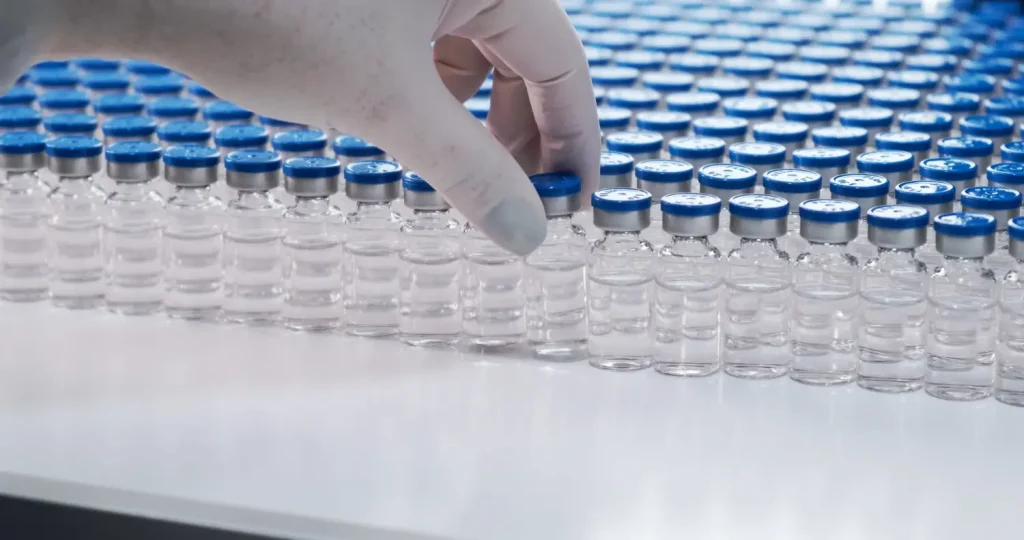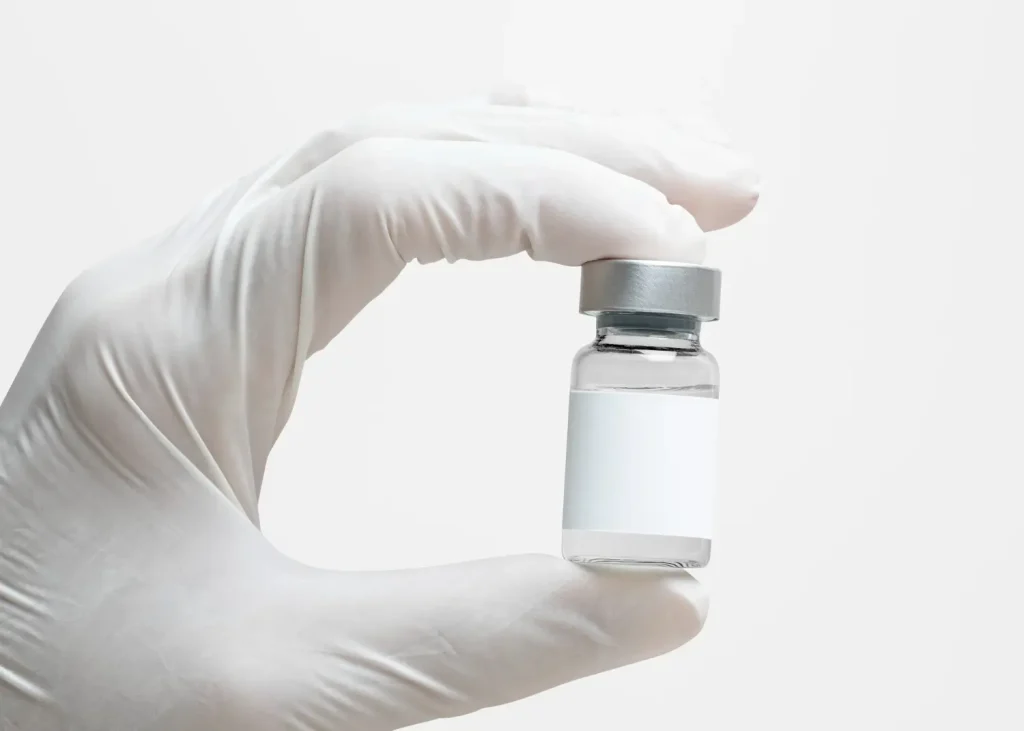According to Yale Medicine, aging leads to volume loss and facial wrinkles. This is accelerated by sun damage and natural declines in bone and fat. Botox smooths dynamic wrinkles by temporarily halting muscle activity, preventing and softening lines. In contrast, fillers address static wrinkles and volume loss by plumping the skin.
Choosing between Botox and fillers hinges on one’s aesthetic objectives and the facial areas of concern. Both treatments aim to make the face look younger and reduce aging signs, but they work in different ways and are used for different problems. Understanding these differences helps individuals decide which treatment to choose.
This article will explore the factors to consider when choosing between Botox and fillers, offering insights into their benefits, potential side effects, and the expected results.
Key Takeaways
- Botox and fillers offer solutions to different aging concerns: Botox for dynamic wrinkles and fillers for volume loss and static wrinkles.
- The choice between Botox and fillers depends on the area of the face targeted and the desired aesthetic outcome.
- Botox effects last about 3-4 months, while fillers can last from 6 months to over a year, depending on the type.
- Both treatments have potential side effects but are generally considered safe when administered by qualified professionals.
- With Botox charged per unit and fillers per syringe, costs vary, making long-term investment and maintenance considerations important.
Understanding Botox and Fillers

Overview of Botox
Botox injections are safe for the face, and a toxin is utilized to prevent muscle contractions, primarily to smooth facial wrinkles temporarily. Beyond cosmetic applications, Botox also has a range of medical uses, including treating neck spasms, excessive sweating (hyperhidrosis), overactive bladder, lazy eye (crossed eyes or misaligned eyes), and chronic migraine.
It blocks specific nerve chemical signals, causing the targeted muscles to relax. This treatment is not a permanent solution, and its effects may last for 3 to 4 months, requiring regular follow-up injections to maintain the desired outcome.
Overview of Fillers
Unlike Botox, which affects muscle contractions, fillers are substances injected beneath the skin to add volume and smooth wrinkles. They are primarily used to treat deeper facial lines, restore volume loss in the face, and enhance features such as lips and cheeks.
The most common fillers are made from hyaluronic acid, a substance naturally found in the skin and known for its ability to retain moisture.
Key Differences Between Botox and Fillers

Mechanism of Action
Botox
Works by blocking nerve signals to muscles, temporarily reducing muscle activity and preventing wrinkles from deepening.
Fillers
They work by physically filling in wrinkles or adding volume to areas such as lips and cheeks, with effects noticeable immediately after treatment.
Areas of Application
Botox
This is primarily used for dynamic wrinkles with muscle movements, such as frown lines, crow’s feet, and forehead lines.
Fillers
These are best suited for visible static wrinkles without muscle movement, volume loss, and contouring facial features.
Duration of Effects
Botox
Botox’s effects typically last 3 to 4 months. Regular treatments are necessary to maintain the effect, which can be extended over time as the muscles adjust.
Fillers
The longevity of fillers varies depending on the type used, the area treated, and the individual’s metabolism. Hyaluronic acid fillers can last from 6 months to over a year, while other types may last up to several years.
Factors Influencing Choice
Desired Outcomes
Botox effectively reduces the appearance of dynamic wrinkles caused by muscle movements, such as crow’s feet, forehead lines, and frown lines. It works by temporarily paralyzing muscles to smooth out wrinkles.
On the other hand, dermal fillers are ideal for addressing static wrinkles, volume loss, and contouring facial features by filling in wrinkles and adding volume to areas like lips and cheeks.
Treatment Areas and Concerns
Botox is predominantly used for the upper part of the face, including around the eyes and forehead, where expression lines are common. Fillers are versatile, treating areas like the lower face—nasolabial folds, marionette lines, lips, and cheeks. They can also enhance volume in the regions that have lost fullness due to aging.
Longevity of Results
The effects of Botox typically last about 3 to 4 months, whereas the longevity of dermal fillers depends on the type of filler used and the area treated but can range from 6 to 18 months. While both treatments require maintenance, fillers generally last longer than Botox before a follow-up treatment is needed.
Age Considerations
Suitability of Botox and Fillers by Age Group
Botox and fillers serve adults of all ages, addressing specific aging concerns. Individuals between 30 and 60 often opt for Botox to reduce dynamic wrinkles from facial expressions. Meanwhile, a broader age group, from their 20s to their 60s and older, chooses fillers to enhance facial volume and smooth static wrinkles.
Preventative vs. Corrective Treatments
Botox is sometimes used as a preventative measure to delay the onset of wrinkles in younger patients. However, its effectiveness can be challenging if lines have yet to form. Dermal fillers are primarily corrective but can also enhance certain features before significant signs of aging appear.
Safety and Side Effects
Common Side Effects of Botox and Fillers
Qualified professionals consider Botox and dermal fillers safe for cosmetic and therapeutic use when administering them. However, like any medical treatment, they may cause side effects:
Botox Side Effects:
- Minor and temporary side effects include:
- Pain, swelling, redness, or bruising at the injection site
- Flu-like symptoms
- Temporary paralysis of nearby muscles
- Headache or neck pain
- Upset stomach
- Rare but more severe issues might include:
- Spread of botulinum toxin causing botulism
- Cardiovascular complications
Dermal Fillers Side Effects:
- Common side effects can involve:
- Pain, swelling, bruising, redness, numbness, itchiness
- Infection at the injection site
- Long-term complications may include:
- Lumpiness, ridges, or facial asymmetry
- Skin damage and scarring
- A significant rare risk is the accidental injection into a blood vessel, which can lead to stroke, tissue death, or blindness.
Risks and How to Mitigate Them
It is important to know not what to do after Botox. Individuals with neuromuscular disorders or those pregnant or breastfeeding should avoid the treatment. Preparation for Botox involves avoiding certain medications and alcohol that may increase the risk of bruising. The key to minimizing risks with fillers includes being aware of allergic reactions to the substances used and ensuring the professional uses high-quality, medical-grade filler products.
Cost Comparison
Initial Costs and Maintenance Expenses
The cost of Botox and fillers varies widely depending on the treatment area, the amount of product used, and the geographic location. Botox is typically priced based on the number of units used, ranging from $10 to $15 per unit, with total costs for a single treatment session ranging from $300 to nearly $1,000.
Dermal fillers, however, can range from $650 to $1,500 per syringe, depending on the type of filler used. The number of syringes needed for a desired outcome varies per individual and treatment area.
Investment Over Time
Botox requires follow-up treatments every 3 to 4 months to maintain results, potentially leading to a recurring investment. Fillers have a higher initial cost and tend to last longer—anywhere from 6 to 18 months or even longer for some fillers—potentially making them a more cost-effective option if fewer treatments are required to maintain the desired results.
Maintenance and Follow-Up
Frequency of Treatments Needed
Botox treatments are recommended every three to four months to maintain their effects. This frequency ensures continuous muscle relaxation, preventing the return of wrinkles and fine lines. It’s also noted that over time, with consistent use, the intervals between treatments may extend as muscles adjust to a more relaxed state.
Commitment to Long-Term Results
Regular maintenance not only preserves the achieved aesthetic results but can also enhance the long-term appearance by preventing the deepening of wrinkles. This proactive approach, especially with Botox, may allow for less frequent treatments as facial muscles adapt to less movement, contributing to smoother skin and a more youthful appearance.
Conclusion
Deciding between Botox and fillers involves evaluating your aesthetic goals, the specific facial concerns you wish to address, and how each treatment aligns with those objectives. While Botox is suited for reducing the appearance of dynamic wrinkles caused by facial expressions, fillers are best for addressing volume loss and static wrinkles.
Both treatments require ongoing maintenance to sustain results, and their safety profile is generally favorable, although potential side effects exist. Ultimately, the choice should be made in consultation with a qualified professional who can tailor the treatment to your needs and expectations.
FAQs
- How do I decide between Botox and fillers?
Consider whether your primary concern is dynamic wrinkles, like forehead lines or crow’s feet (Botox), or whether you want to address volume loss and static wrinkles (fillers).
- Are Botox and fillers safe?
Yes, when administered by qualified professionals, Botox and fillers are considered safe. However, potential minor side effects exist, such as pain or swelling at the injection site.
- How long do Botox and filler effects last?
Botox effects typically last 3-4 months, while filler longevity varies from 6 months to over a year, depending on the type and individual factors.
- Can Botox and fillers be used together?
Yes, combining Botox and fillers can address multiple concerns simultaneously, like smoothing dynamic wrinkles with Botox and restoring volume with fillers.
- What are the main differences between Botox and fillers?
The main difference lies in their mechanism of action: Botox temporarily reduces muscle activity to smooth wrinkles, whereas fillers add volume to soften wrinkles and enhance facial features.
References
Yale Medicine. (n.d.). Botox and soft tissue fillers. Retrieved from https://www.yalemedicine.org/conditions/botox-and-soft-tissue-fillers
Cleveland Clinic. (n.d.). What’s the difference between facial fillers and Botox? Retrieved from https://health.wordpress.clevelandclinic.org/whats-the-difference-between-facial-fillers-and-botox/
Cleveland Clinic. (n.d.). 7 questions about dermal fillers & Botox answered. Retrieved from https://health.clevelandclinic.org/7-questions-about-dermal-fillers-botox-answered
Mayo Clinic. (n.d.). Botox injections. Retrieved from https://www.mayoclinic.org/tests-procedures/botox/about/pac-20384658
American Academy of Dermatology. (n.d.). Botulinum toxin overview. Retrieved from https://www.aad.org/public/cosmetic/wrinkles/botulinum-toxin-overview





















